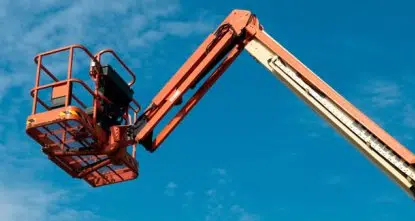
02/10/2023
A worker operating the elevated work platform about 5pm on 4 January died when he was crushed between the machine and a roof purlin. The deceased was found by colleagues the following morning. While limited information is available regarding this incident, similar incidents have occurred within Australia previously. The most common EWP incidents happen when reversing, slewing or elevating near an obstruction, or from unexpected movement of the boom near an obstruction. Boom type EWPs have additional risks because the boom raises in an arc shape rather than straight up. These risks must be managed using the following controls: Before starting work, visually check the work area for hazards such as overhead obstructions and power lines. Where possible, sequence the building works so that adequate room is available to safely operate the EWP and the risk of the platform or boom becoming caught on an obstruction is minimised. Supervisors and spotters should be trained and on site when an EWP is in use to help the operator navigate difficult obstructions. Movement of the EWP should always be slow, deliberate and planned, with careful use of the EWP's proportional controls. Start with the large movements of driving and elevating the EWP, and finish with finer movements when closer. Safe work method statements are required for all high risk construction work. Operators must be competent and provided with adequate training, including familiarisation training for each specific make and model of EWP they use. If the EWP has a boom of 11 metres or longer, the operator must hold a high risk work licence. Other workers should know how to use the ground controls and emergency descent devices for the type and model of EWP being used. For further information or assistance phone our Senior Consultant Michelle DeGalt-Rohlf on 0499 179 018 or email safety@healthforcegroup.com.au *Source: https://www.worksafe.qld.gov.au/news-and-events/alerts/incident-alerts/2017/worker- fatally-crushed-by-elevating-work-platform
